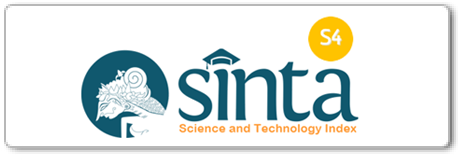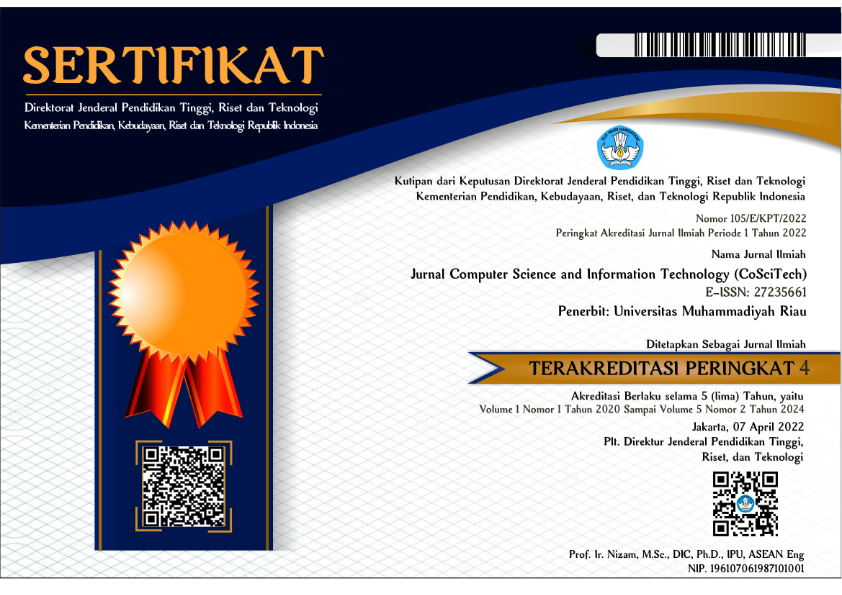Revolusi Pengelolaan Alcoholism: Sistem Monitoring Berbasis Internet of Things untuk Kadar Alkohol pada Minuman Berkaleng
DOI:
 https://doi.org/10.37859/coscitech.v4i2.5085
https://doi.org/10.37859/coscitech.v4i2.5085
Abstract
In recent years, canned beverages have become popular among the public, offering a variety of flavors and attractive designs. However, it is important to note that canned drinks are not limited to non-alcoholic beverages but also include alcoholic beverages. Unfortunately, many consumers are unaware of the presence of alcohol in canned drinks in general. Excessive or uncontrolled consumption of alcoholic beverages can lead to various health and social problems. This research aims to assist the general public in determining the alcohol content in canned drinks by using an alcohol content detection system designed using the TGS822 sensor. The alcohol content in canned beverages will be monitored and reported through the Internet of Things (IoT). Based on alcohol content testing, Group A has an alcohol concentration of 1-5%, Group B has an alcohol concentration of 5-20%, and Group C has an alcohol concentration of 20-55%. This sensor is capable of detecting the presence of alcohol through the TGS822 sensor and reporting it through the IoT network using a Telegram bot application.
Downloads
References
[2] I. Lestari, “Pengaruh Penambahan Susu, Madu, Minuman Bersoda Dan Minuman Energi Terhadap Kadar Alkohol Pada Minuman Keras,” J. Kesehat. Prima, vol. 9, no. 1, pp. 1383–1390, 2015.
[3] D. C. Nguyen, M. Ding, P. N. Pathirana, A. Seneviratne, J. Li, and H. Vincent Poor, “Federated Learning for Internet of Things: A Comprehensive Survey,” IEEE Commun. Surv. Tutorials, vol. 23, no. 3, pp. 1622–1658, 2021, doi: 10.1109/COMST.2021.3075439.
[4] S. Agustian and S. Ramadhani, “Jurnal Computer Science and Information Technology ( CoSciTech ) menggunakan algoritma lexrank,” vol. 3, no. 3, pp. 371–381, 2022.
[5] D. P. Caniago, “Perancangan Papan Informasi Mahasiswa Berbasiskan Real Time Clock Pada Labor Elektro Iteba Dengan Memanfaatkan Fasilitas Short Message Service (Sms),” J. Teknol. Dan Sist. Inf. Bisnis, vol. 4, no. 1, pp. 171–177, 2022, doi: 10.47233/jteksis.v4i1.393.
[6] H. Sanjaya, N. K. Daulay, J. Trianto, and R. Andri, “Tempat Sampah Otomatis Berbasis Mikrokontroler Arduino,” JURIKOM (Jurnal Ris. Komputer), vol. 9, no. 2, p. 451, 2022, doi: 10.30865/jurikom.v9i2.4058.
[7] T. F. Siallagan and T. Tita, “Di Rancang Bangun Sistem Keamanan Terhadap Kunci Ruangan Berbasis Bot Telegram Menggunakan Mikrokontroler Esp8266,” J. Inf. Technol., vol. 2, no. 2, pp. 45–54, 2020, doi: 10.47292/joint.v2i2.23.
[8] D. Aribowo, D. Desmira, R. Ekawati, and N. Rahmah, “Sistem Perancangan Conveyor Menggunakan Sensor Proximity Pr18-8Dn Pada Wood Sanding Machine,” EDSUAINTEK J. Pendidikan, Sains dan Teknol., vol. 8, no. 1, pp. 67–81, 2021, doi: 10.47668/edusaintek.v8i1.146.
[9] A. Hasibuan and L. Hakim, “Analisis Regresi Alat Ukur Emisi Gas Karbon Monoksida Berbasis Arduino Uno,” EduFisika, vol. 5, no. 01, pp. 8–15, 2020, doi: 10.22437/edufisika.v5i01.9123.
[10] D. P. Caniago, T. Komputer, and F. T. Informasi, “Jurnal Computer Science and Information Technology ( CoSciTech ) Aplikasi Internet of Things pada Kotak Cerdas Penerima Tugas Mahasiswa menggunakan Internet of Things application on Student Assignee Smart Box using ESP32-Cam,” vol. 3, no. 3, pp. 479–486, 2022.














